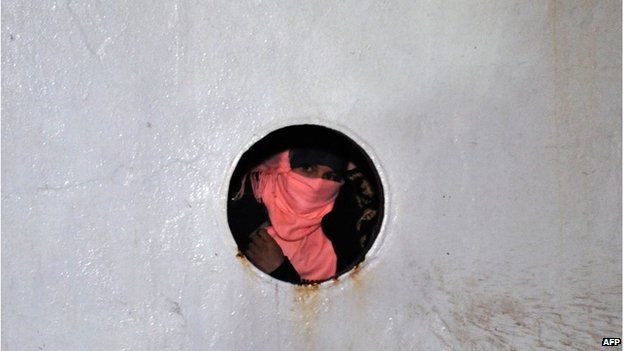Global Instability Will Continue to Drive Immigration in 2015
Published on January 15th, 2015
As we celebrated the world over, welcoming in 2015, a cargo ship, apparently abandoned by crew, was on a crash course to the Italian coast with nearly 800 people, presumed to be illegal migrants.
Early reports as to the actual situation were confusing, but it appears those being smuggled were Kurds and Syrians. After the smuggler crew fled, the Italian Navy – not without challenges – was able to take control of the ship. Had the ship not been intercepted, and instead crashed, many likely would have died.
 |
| Syrian illegal immigrant on ship to Italy. |
On the heels of this story came a report of an old livestock ship carrying 360 illegal migrants that also ended up in Italy. In this saga too, the crew of human smugglers had abandoned the ship.
While here at home we’re most familiar with human traffickers bringing in illegal immigrants from Central America and Mexico – even though people come to the U.S. illegally from countries worldwide – illegal immigration of course occurs worldwide with significant impacts to the receiving countries.
From Africa and Asia to the Middle East, continuing political and economic instability, poverty and war, including the horrific purge in Syria and Iraq at the hands of fundamentalist barbarians, will continue to drive illegal immigration this year and likely for years to come.
Just looking at the African continent, population is expected to DOUBLE by 2050 to 2.4 billion people. African mothers have an average of 5.2 children; in Niger, the average is 7.6. Most of the growth is expected to be in the sub-Saharan African countries, which are the continent’s poorest. Such rapid population growth dramatically increases the challenges of reducing poverty and the likelihood of migration for the most ambitious to escape continued impoverishment.
But there are many other examples from across the pond with different challenges, including Greece, which has a huge number of unemployed youth, as do Portugal, France and Spain. Grim employment prospects fuel movement to locations where there might be opportunity. So while these examples aren’t ones of extreme poverty and ravaging war, they do further illustrate what is filling the huge worldwide immigration funnel.
Obviously, political and economic stability worldwide is essential, but obviously too that’s not so easy to achieve. But those of us working on growth and sustainability issues understand that stabilizing population is one part of the answer, and allowing mass, unchecked illegal immigration only shifts the burdens to other regions; it doesn’t address the problems at the sources, so the problems grow.
Perhaps the best current illustration of how mass immigration doesn’t make a dent in worldwide poverty is in Roy Beck’s “gumball” talk. If you’ve not seen it, you’ll find it here. Whether illegal immigrants are coming to the U.S. from our nearest neighboring country or from countries around the world, what’s become our de facto policy of basically letting everyone remain in the U.S. who makes it here doesn’t work short-term, mid-term or long-term to achieve political and economic stability, social cohesion or sustainability.
It’s easy to become discouraged, seeing a continuous gutting of immigration law in recent years. But if optimism is the hallmark of a New Year, let’s use that to re-energize and refresh our efforts to educate more people about the needs to limit immigration for a sustainable America. More than ever, more voices are needed to tell our elected officials we need a sustainable population policy.




